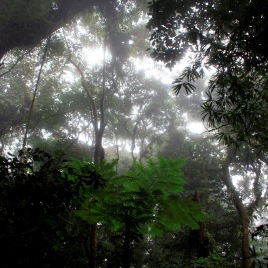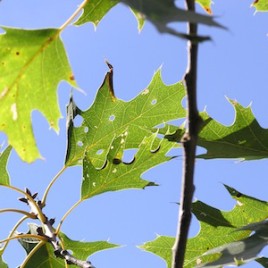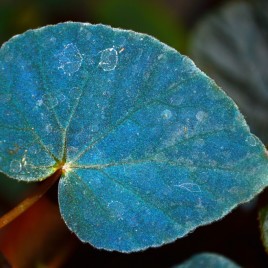Vivid blue colours of plants like the various species of Begonia aren’t just for show, they are also a sophisticated survival mechanism. New research out of University of Bristol shows that the plants’ blue colour indicates the presence of specialized chloroplasts in the surface layers. Blue plants are designed to process sunlight five to 10 […]
Tag: plants
Cutting away at the mystery of leafcutting bees
Leafcutting bees use pieces of various plant leaves to build their nests, however determining which plants they prefer has been a challenge. In the past, researchers had to either observe leafcutting bees visiting a plant or identify pieces of leaf in the nest in to know which plant the bees relied on. Now, using DNA […]

No extra growth in tropical trees due to increased atmospheric CO2 levels
The assumption that increased atmospheric CO2 levels contribute to increased tree growth is being called into question by this study published in Nature Geoscience. Predicting the response of tropical forests is important in the modeling of future climate scenarios. Extra CO2 in the atmosphere is expected to increase tree growth, by improving the trees rate of […]

Vibration is key to wind pollination
If you’re a plant, and the animals or insects that pollinate you are disappearing or gone, your next best option might be wind pollination, and a new study sheds light on what adaptations are needed to make this transition. Researchers looked at flowers of English plantain, which like most wind-pollinated plants evolved from an animal-pollinated […]
Lighting the way for more tomatoes
Researchers have found a gene in a wild species of tomato that allows the plant to tolerate continuous light, potentially leading to a 20% yield increase in commercial varieties. One of the major limitations for crop productivity is the amount of light available each day but cultivated tomato plants often develop damaging leaf injuries when […]

Plants – what’s eating them?
A new analysis of over 1000 plant species shows that on average, only about 5.3 percent of their leaves are eaten by insects and vertebrate grazers – less than a third of previous estimates. This means that most of the energy captured by photosynthesis doesn’t go ‘up’ the food chain, but instead is passed on […]

